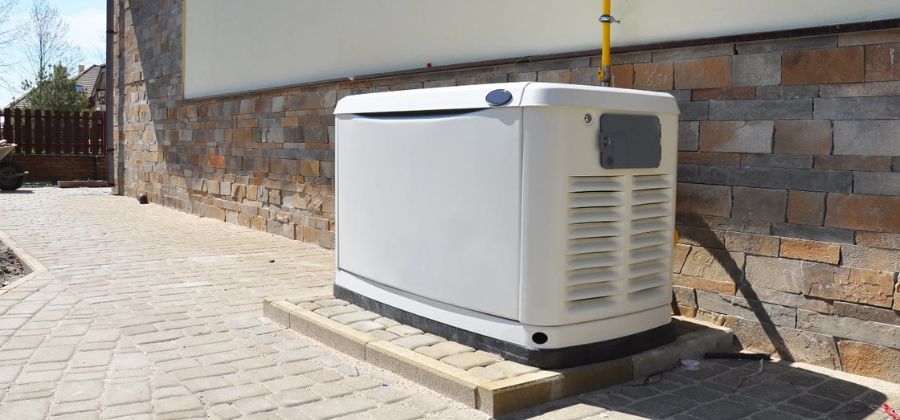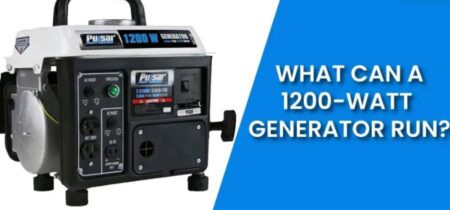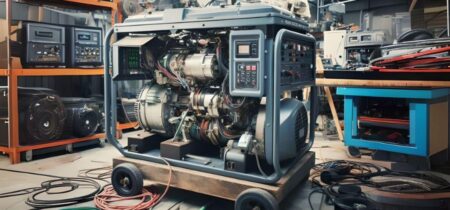
Generator interlock kits used in portable generators are sometimes the electronic pioneers in providing power to homes during power outages. These kits ensure that the generator is safely connected to the home’s electrical system, preventing back-feeding to the grid which could be dangerous to the workers and equipment around. The main purpose of a generator interlock kit is to ensure that the main utility line is disconnected from the main line during a power failure.
This is shut off by a mechanical device to allow the portable generator to energize the home electrical system so that the main breaker and generator breaker are not able to be on at the same time.
It is legal to use generator interlock kits in the United States, but there are certain rules and regulations that must be followed. These kits are subject to many regulations, especially protection from over-currents as they require a working backup system that can support backup generators.
Although these kits are legal nationwide, more authorities have specific requirements for their installation. These kits are classified as “non-standard” equipment for generators and are widely used to increase generator efficiency You must ensure that they are legal to use according to the specifications and requirements of the community or state-incorporated areas. The Underwriters Laboratories licensed these products under UL 67.
So ‘Are generator interlock kits legal?’ – yes, they are legal in most parts of America, provided you follow local building codes.
How to Determine the Power Requirements of Your Generator and the Interlock Kit?
It ain’t rocket science but.. We have to consider a few points while executing the calculation. First off, you need to consider the wattage needed to power the appliances and systems you want to use during a power outage.
You can calculate the total wattage needed by adding the running wattage and starting wattage of each appliance with a motor, using the formula: Running wattage (R) + Starting wattage (R x 3) = Total wattage needed.
Once you have the total wattage needed, you can choose a generator that provides at least that many watts. If you want to use a generator to power electric heat or central air, you might need a generator with a capacity of at least 12,000 or 15,000 watts. The interlock kit is compatible with any size generator but I recommend using a generator that’s at least 5,000 watts so that we can easily connect to a transfer switch and handle the load of several appliances.
Here are some examples of suitable interlock kits for different generator sizes:
For 150/200 Amp Panels General Electric Vertical, the GenInterlock GLK-GE-200VL is suitable
For 150 or 200 amp single handle Vertical throw up (on) down (off), the GenInterlock GE-200HDA Generator Interlock Kit is suitable
For Square D QO & Homeline 150 and 200 Amp Panels, there are various options available such as the #HOM200IUL and #QO200IUL
How to Compare the Different Categories and Types of Interlock Kits for Generators
Safety ease of installation, and compatibility with your generator and electrical panel should be your top most priority whenever you’re about to compare the very many different categories and/or types of generator.
Generator Panel vs. Interlock Kit
Manual Generator Panel: This panel ties into your existing electrical panel and lets you choose the circuits you want to power during a blackout—more control over the circuits powered by the generator and less likely to overpower the generator. It may be more expensive.
Interlock Kit: This kit is very flexible for the loads you want and cheaper as well as quicker to install than a generator panel. However, it does require a user to manage the loads themselves and may not be suitable for smaller generators.
Interlock Kits vs. Transfer Switches
Interlock Kits: These kits are simple, cost-effective and easier to install which makes them ideal for occasional use. These kits ensure safe connectivity of the generator but require manual management of the power source. They also allow power to any circuit within the electrical panel which may lead to overloading if the generator is not sized according to the load.
Transfer Switches: Transfer switches provide seamless consistent power transitions and unmatched safety, especially the automatic ones. They are a little pricy but automatically or manually switch between utility and generator power, eliminating the need for manual management of circuits.
Examples of Interlock Kits for Different Generator Sizes
- GenInterlock GE-200VL: Suitable for 150/200 Amp Panels General Electric Vertical.
- GenInterlock EAT-CH200A: Ideal for 150/200 Amp Panels Cutler Hammer BR Series.
- GenInterlock GE-100A: Designed for 100 Amp Panels General Electric GE.
When selecting the best interlock kit for your needs and preferences, consider the following criteria:
Compatibility: Make sure that the kit is compatible with your generator’s capacity and your electrical panel’s breaker system.
Ease of Installation: Choose a kit that is easy to install and doesn’t require extensive technical knowledge or skills.
Safety Features: Look for kits with safety features that prevent back-feeding and ensure proper operation during a power outage.
Cost: We recommend to highly consider your budget when selecting an interlock kit as prices can vary depending on the brand and features.
Maintenance Requirements: Choose a kit with minimal maintenance requirements if you prefer low-maintenance solutions.
How to Install, Maintain, and Replace your Generator Interlock kit?
● Installation
If you’re installing an interlock kit on your generator, here’s the right to do it. Just a heads-up, the manual has the details. If you’re unable to follow through then you can consult your electrician. The kit is super useful for using your main panel like a switch, keeping the generator from leaking out to the lines which is a big no-no for the utility crew fixing power lines.
Here are the general steps for installing a generator interlock kit:
- Turn off the main circuit breaker
- Install the hold-down breaker bracket that is included in the interlock kit.
- Install the main breaker and generator breaker interlock.
- Engage circuits one at a time so the large loads have time to start
- Reverse the procedure to return to the main power
The interlock kit is all about safe electricity flow from your portable generator when the lights go out. It’s a reliable and authentic way to avoid dodgy and dangerous backfeeding.
● Routine Check and Tests
Here are some ways you can carry usual checks and tests to ensure your interlock is in great working condition:
Visual Inspection: Check your interlock kit periodically to see if it is worn out, damaged, or corroded. Ensure that you see whether there are any loose connections or other anomalies in their connections.
Operational Test: To test the interlock kit, perform simulation of the power outage condition. Make sure that the interlock is working in order to preclude the main breaker from shutting and the generator breaker concurrently.
Electrical Testing: Check continuity and properly functioning electrical connections with a multimeter. Ensure that the interlock system is operational and shuts down all the possibilities of back-feeding through the power lines.
Compliance Check: The interlock kit should have a certificate to comply with the National Electrical Code (NEC) as well as any local rules.
To identify signs of a failing interlock kit and replace it safely and correctly here’s what you can do:
Signs of Failure: If you encounter difficulty in engaging or disengaging the interlock mechanism, abnormal sounds during operation or visible damage to the kit’s components that’s an obvious sign of interlock failure.
Replacement Process: If you suspect a failing interlock kit, replace it promptly or contact a qualified electrician to safely disconnect the old interlock kit and install a new one. Ensure that the replacement kit is compatible with your electrical panel and meets all necessary safety standards.
Remember, safety is paramount when working with electrical systems. Always consult a professional electrician for any maintenance, testing, or replacement of interlock kits to ensure optimal condition and safe operation
How to Comply with the Legal and Safety Regulations of using Interlock kits?
Generally, in the US, the generator interlocks have to be listed with the Underwriters Laboratory (UL) and be referred to as UL 67. These sets should meet the standards of underwriters laboratories, NEC, and NFPA requirements. The “National Electrical Code,” commonly referred to as the NEC, or NFPA 70 (adopted in all 50 states), is an exhaustive code for proper electrical designs, installation, and inspections in different occupancies.
The NEC, although very commonly accepted, does not equate to a Federal Law but forms part of a publication series of the National Fire Code NFPA.
The use of any nonconforming or unreliable interlock kits exposes one to a number of hazards, including feeding electricity into the external mainline, which is criminalized. Back-feeding may cause a loss of performance for the generators, electrocution to line workers, and fires and power damage as well. Further, NEC’s 2020 version states that transfer equipment or interlock kits should be listed, showing increased compliance requirements and safety concerns.
Remember that interlock kits are safety parts that act as position switches, proximity switches, or limit switches.
They are fitted on movable gates of machines that activate when these gates are moved. The interlocking of safety controller settings together with the perimeters of gates helps to secure the machine’s status appropriately. When it comes to the logic of normally closed interlocks, wiring makes sense that machines will only operate if the circuit is closed promoting reliability and error detection. It is advisable that such a switch should be spring-actuated with safety interlocks that spread the contact points apart when the system opens.
Final Words
Generator interlock kits are legal in the U.S. but they must adhere to local building codes and regulations. They safely connect a generator to your home’s electrical system to prevent back-feeding to the grid. Calculate the total wattage needed for appliances during an outage to determine the power requirements and in case you have to compare the kits, prioritize safety, ease of installation, and compatibility with your generator and electrical panel. Turn off the main breaker and follow specific steps to install the interlock, with regular maintenance checks recommended. Compliance with legal and safety regulations, such as UL 67 and NEC standards must be considered.
Frequently Asked Questions
What is the NEC code for the generator interlock kit?
Generator interlock kits must comply with the National Electrical Code (NEC) and the National Fire Protection Code. They’re listed to UL 67 standards for use in the USA.
Is the generator interlock code compliant?
Yes, generator interlock kits are legal in the USA as long as they adhere to all relevant codes, particularly those protecting against over-currents, and are part of a functioning backup system.
Is a generator interlock kit required?
It’s not explicitly stated that a generator interlock kit is required by the NEC.
Is an interlock kit safe?
Interlock kits are safe as long as they comply with NEC and installed correctly by qualified electrical personnel. They’re a common and legally accepted solution for integrating a generator into a home’s electrical system when used according to code and safety guidelines.









